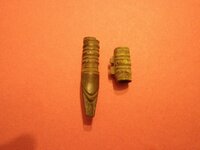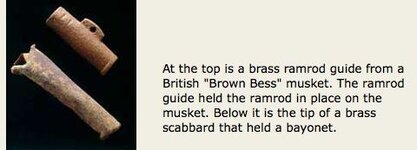BioProfessor
Silver Member
Hi Folks,
Well we moved to a new spot where some of the maps indicated there might have been more activity. It's a big field and it is dry as a bone but I think we are making progress. We got to a place that is about 100 meters by 100 meters that produced things that might be associated with habitation and/or commerce. Since the pasture has never been really plowed, things are not scattered vertically or horizontally much. So there will be a place you will find a few things and then no signals for a pretty good ways, then more "clusters." I like the area here better than the other fields. The finds are a bit more intriguing. I think it is harder work for the targets but that is the way it is sometimes.
Since the area has not been plowed, we don't get the normal "clues" on the top of the ground - like pottery and pipes. We have to stumble across them when we dig a target. As we have moved over the area, the pottery and pipes we have found are old. So that is good.
So here are some of the things coming from the area the maps says should be better.
Some information about the items.
The yellow and brown pottery shards set off my PI Pin Pointer. Think they used a bit too much lead.
The copper coin is a 1578 Double Duit and the silver coin next to it is a counterfeit 6 Stuvier and it has a countermark. Go figure
Seems somebody was in the military as the spur and the ramrod guide could have be "bring backs" from some campaign.
I thought it was interesting that the lead seal for "SATYN" from Leiden was for a bolt of Satin cloth. Maybe somebody here had money.
The beehive thimble is cast bronze. Thick and heavy and would not have been fun to use. Maybe 14th century??
Enjoy the pics. It was a LOT of work and the temperature has been in the 90's here.
Daryl
Well we moved to a new spot where some of the maps indicated there might have been more activity. It's a big field and it is dry as a bone but I think we are making progress. We got to a place that is about 100 meters by 100 meters that produced things that might be associated with habitation and/or commerce. Since the pasture has never been really plowed, things are not scattered vertically or horizontally much. So there will be a place you will find a few things and then no signals for a pretty good ways, then more "clusters." I like the area here better than the other fields. The finds are a bit more intriguing. I think it is harder work for the targets but that is the way it is sometimes.
Since the area has not been plowed, we don't get the normal "clues" on the top of the ground - like pottery and pipes. We have to stumble across them when we dig a target. As we have moved over the area, the pottery and pipes we have found are old. So that is good.
So here are some of the things coming from the area the maps says should be better.
Some information about the items.
The yellow and brown pottery shards set off my PI Pin Pointer. Think they used a bit too much lead.
The copper coin is a 1578 Double Duit and the silver coin next to it is a counterfeit 6 Stuvier and it has a countermark. Go figure
Seems somebody was in the military as the spur and the ramrod guide could have be "bring backs" from some campaign.
I thought it was interesting that the lead seal for "SATYN" from Leiden was for a bolt of Satin cloth. Maybe somebody here had money.
The beehive thimble is cast bronze. Thick and heavy and would not have been fun to use. Maybe 14th century??
Enjoy the pics. It was a LOT of work and the temperature has been in the 90's here.
Daryl
Attachments
Upvote
0


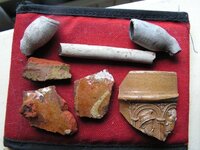
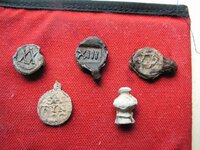
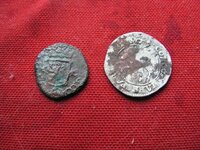
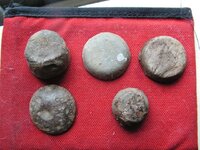
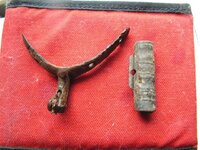
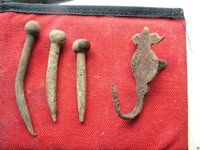
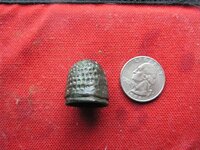




 ?
?